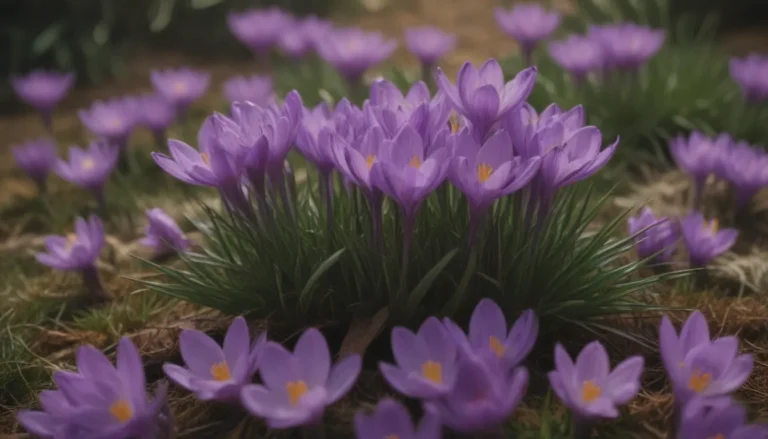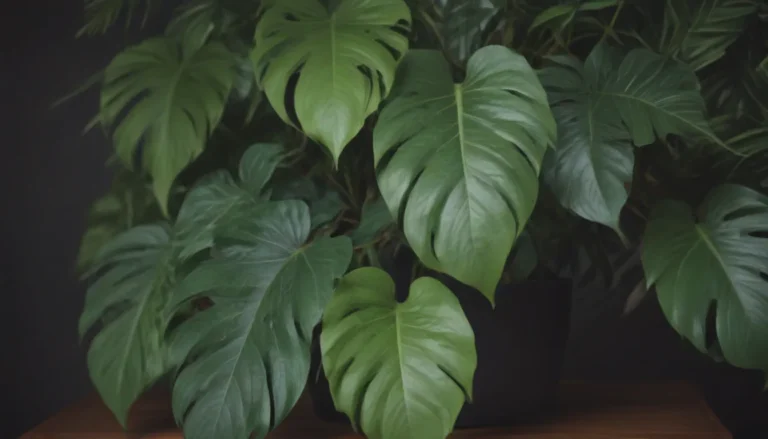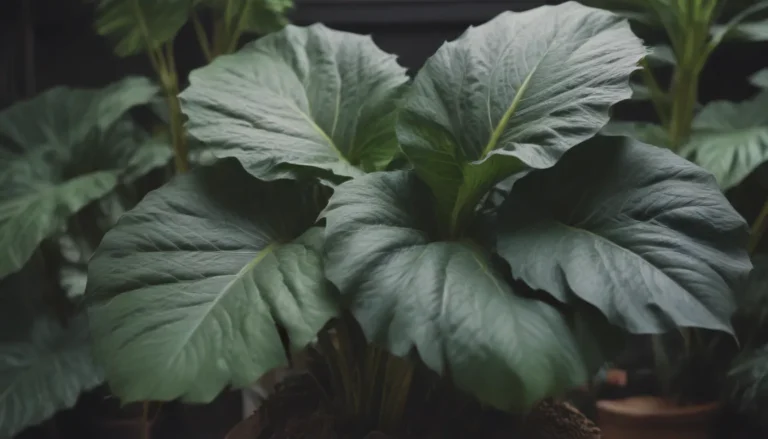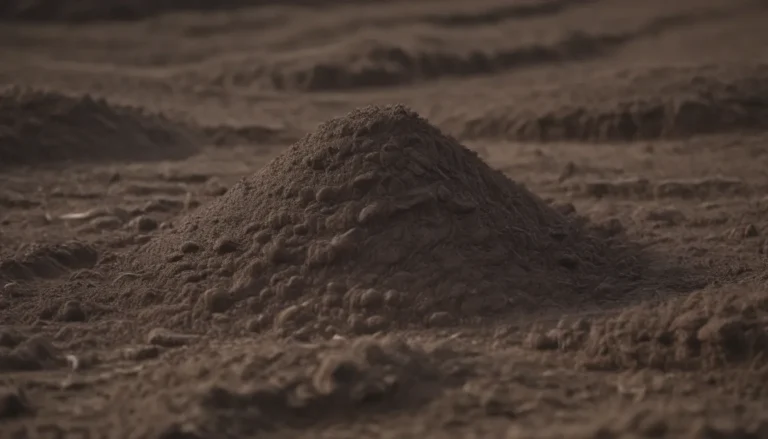The Ultimate Guide to Cold Hardy Palm Trees for Freezing Weather

Welcome to the ultimate guide to cold hardy palm trees for freezing weather! If you’ve always dreamed of creating a tropical oasis in your outdoor space but live in a climate with occasional freezing temperatures, fear not. There are plenty of cold hardy palm trees that can thrive in colder weather and even withstand a little snow.
In this comprehensive guide, we’ll explore 20 cold hardy palm trees that are perfect for planting in climates that experience freezing weather. We’ll cover everything from the Lady Palm to the Needle Palm, detailing their native areas, USDA growing zones, height, sun exposure preferences, and more.
So, whether you’re located in Maine, Michigan, Montana, or any other state with chilly winters, you too can enjoy the beauty of palm trees in your landscape. Let’s dive in and discover which cold hardy palms are best suited for your region.
Lady Palm (Rhapis excelsa)
The Lady Palm, also known as the Bamboo Palm, is a small, shrubby evergreen palm with bamboo-like stems and dark-green, fan-shaped leaves. This shade-loving species can withstand temperatures down to 18 degrees Fahrenheit. It’s perfect for indoor growing, as a foundation plant, or in mixed shrub borders in shady locations.
- Native Area:
- USDA Growing Zones:
- Height:
- Sun Exposure:
Puerto Rican Thatch Palm (Coccothrinax alta)
The Puerto Rican Thatch Palm, also known as the Barbados Silver Palm, is a palmate-leaved tree that can tolerate temperatures of 28–30 degrees Fahrenheit. It thrives in salt-wind conditions, making it an excellent choice for beachside landscaping.
- Native Area:
- USDA Growing Zones:
- Height:
- Sun Exposure:
Fast Fact
Palm trees can be divided into three categories of leaves: palmate, pinnate, or costapalmate.
Date Palm (Phoenix dactylifera)
The Date Palm is a classic palm tree with tall trunks and arching, feather-like fronds. It’s hardy down to 15 degrees Fahrenheit and produces creamy yellow flowers followed by edible fruits. This palm is a frequent sight in urban landscapes and has cold hardy dwarf cultivars suitable for indoor growing.
- Native Area:
- USDA Growing Zones:
- Height:
- Sun Exposure:
Queen Palm (Syagrus romanzoffiana)
The Queen Palm is a pinnate-leaved tree that tolerates temperatures down to 20 degrees Fahrenheit. It has a smooth gray trunk and feathery fronds of dark green leaves that droop into an attractive canopy. A common street-side and yard tree, the Queen Palm requires frequent removal of dead leaves and acidic soil for optimal growth.
- Native Area:
- USDA Growing Zones:
- Height:
- Sun Exposure:
Everglades Palm (Acoelorrhaphe wrightii)
The Everglades Palm is a medium-sized tree that can survive temperatures as low as 20 degrees Fahrenheit. It forms a cluster of slender trunks topped with tufts of fan-shaped leaves and is a good option for beach areas due to its tolerance for salty spray and sandy soil.
- Native Area:
- USDA Growing Zones:
- Height:
- Sun Exposure:
California Fan Palm (Washingtonia filifera)
A popular landscape tree in the Southwest, the California Fan Palm has a moderate growth rate and can survive temperatures as low as 15 to 20 degrees Fahrenheit. With regular trimming of old fronds, this species is among the most attractive of all palms, also known as the Desert Fan Palm.
- Native Area:
- USDA Growing Zones:
- Height:
- Sun Exposure:
Cabbage Palm (Sabal palmetto)
The Cabbage Palm is a costapalmate-leaved tree with a single trunk that is hardy down to 10 to 15 degrees Fahrenheit. Known for its strength and resistance to wind, this palm is the state tree of both South Carolina and Florida.
- Native Area:
- USDA Growing Zones:
- Height:
- Sun Exposure:
Chinese Fan Palm (Livistona chinensis)
The Chinese Fan Palm, also known as the Fountain Palm, is very cold hardy and can tolerate temperatures down to 20 degrees Fahrenheit. With large fan-shaped leaves and a moderate growth rate, this palm is popular in the southern states and as far north as Oklahoma.
- Native Area:
- USDA Growing Zones:
- Height:
- Sun Exposure:
Now that we’ve explored some of the cold hardy palm trees that can withstand freezing weather, let’s delve into more options that are perfect for creating a tropical atmosphere in colder climates.
European Fan Palm (Chamaerops humilis)
The European Fan Palm is a tough plant that can survive temperatures as low as 5 degrees Fahrenheit. This bushy evergreen palm grows in a clump of trunks topped with clusters of fan-shaped leaves, making it an excellent potted plant or “shrub” palm.
- Native Area:
- USDA Growing Zones:
- Height:
- Sun Exposure:
Mexican Fan Palm (Washingtonia robusta)
Hardy down to 20 degrees Fahrenheit, the Mexican Fan Palm is a popular choice for indoor and outdoor planting. With arching, fan-shaped leaves and moderate drought tolerance, this palm grows best with adequate water and regular trimming of dead leaves.
- Native Area:
- USDA Growing Zones:
- Height:
- Sun Exposure:
Saw Palmetto (Serenoa repens)
The Saw Palmetto is one of the most cold-hardy palms, able to survive temperatures as low as zero. This short, shrubby plant grows in a ground cover fashion with large palm-shaped leaves that have saw-like teeth along the edges.
- Native Area:
- USDA Growing Zones:
- Height:
- Sun Exposure:
Bismark Palm (Bismarckia nobilis)
The Bismark Palm is a festive evergreen tree with stiff, steely blue fronds and a unique trunk design. Tolerating freezes down to 15 to 25 degrees Fahrenheit, this palm is popular in Florida and south Texas but can also grow as far north as Oregon and Georgia.
- Native Area:
- USDA Growing Zones:
- Height:
- Sun Exposure:
Mexican Blue Palm (Brahea armata)
The Mexican Blue Palm has a lovely blue hue to its long, fan-shaped fronds and can survive temperatures down to 18 degrees Fahrenheit. This palm is tolerant of strong winds and does not attract pests or diseases, making it a great option for cold weather regions.
- Native Area:
- USDA Growing Zones:
- Height:
- Sun Exposure:
Guadalupe Palm (Brahea edulis)
The Guadalupe Palm is a slow-growing tree with shiny bluish-green fronds that bloom with fragrant white flowers and produce small, edible fruits. Tolerant of wind, salt, and drought, this palm can grow in states with infrequent temperatures down to 20 degrees Fahrenheit.
- Native Area:
- USDA Growing Zones:
- Height:
- Sun Exposure:
Jelly Palm (Butia capitata)
The Jelly Palm, also known as the Pindo Palm, is one of the hardiest of the cold hardy palms. With showy orange-yellow flowers and edible fruits that taste like pineapple, this salt-tolerant and drought-resistant palm can survive temperatures down into the single digits.
- Native Area:
- USDA Growing Zones:
- Height:
- Sun Exposure:
Chestnut Dioon (Dioon edule)
The Chestnut Dioon, also known as the Virgin Palm, is a slow-growing palm with straight, stiff blue-green pinnate leaves that produce large seed cones with edible seeds. Tolerant of drought and salt, this palm can survive temperatures down to 22 degrees Fahrenheit.
- Native Area:
- USDA Growing Zones:
- Height:
- Sun Exposure:
Chilean Wine Palm (Jubaea chilensis)
The Chilean Wine Palm is a massive evergreen tree with a massive trunk and dense crown of large pinnate leaves. Tolerant of cold, moisture, frost, and drought, this palm can survive temperatures as low as 7 degrees Fahrenheit and has been known to grow in regions as far north as Seattle and southern Canada.
- Native Area:
- USDA Growing Zones:
- Height:
- Sun Exposure:
Canary Island Date Palm (Phoenix canariensis)
The Canary Island Date Palm is a majestic palm tree that can grow in USDA Zone 8b, where temperatures dip to 15 to 20 degrees Fahrenheit. With long feather-like fronds and prickly stems, this palm requires pruning to keep it looking its best.
- Native Area:
- USDA Growing Zones:
- Height:
- Sun Exposure:
Needle Palm (Rhapidophyllum hystrix)
The Needle Palm is one of the most cold hardy palms, able to withstand temperatures as low as -5 to -15 degrees Fahrenheit. This shrubby palm doesn’t have a trunk and instead grows slender stems out of a single base, with spines between leaves for protection.
- Native Area:
- USDA Growing Zones:
- Height:
- Sun Exposure:
Chinese Windmill Palm (Trachycarpus fortunei)
The Chinese Windmill Palm is one of the most cold hardy trees, able to survive freezing temperatures as low as 10 degrees Fahrenheit. With fan-shaped leaves that are 3 feet in length, this evergreen palm is perfect for chilly climates in zones 5 to 7.
- Native Area:
- USDA Growing Zones:
- Height:
- Sun Exposure:
Tips for Growing Cold Hardy Palms
When faced with a brief cold snap in your climate zone, you can protect your palm trees using these tips:
- Keep the plant fertilized
- Apply mulch
- Cover small trees with sheets or blankets
- Apply a freeze-protecting spray
By following these tips and selecting the right cold hardy palm tree for your region, you can enjoy a tropical oasis in your own backyard, even in freezing weather.
In conclusion, cold hardy palm trees are a fantastic addition to any landscape, even in regions with freezing temperatures. With the wide variety of cold hardy palms available, there’s sure to be a perfect palm tree for your climate and preferences. Whether you choose the Lady Palm, Mexican Blue Palm, or any of the other cold hardy palms mentioned in this guide, you can create a tropical paradise in your own outdoor space.
So, don’t let freezing weather stop you from growing palm trees. With the right care and selection of cold hardy palms, you can enjoy a touch of the tropics wherever you are. Happy planting! 🌴





